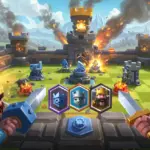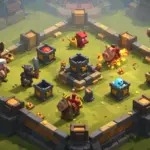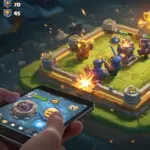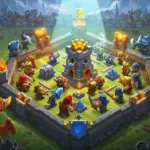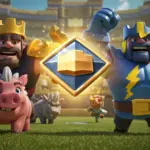Clash Royale Trophy Pushing: Your Ultimate Guide to Personal Bests
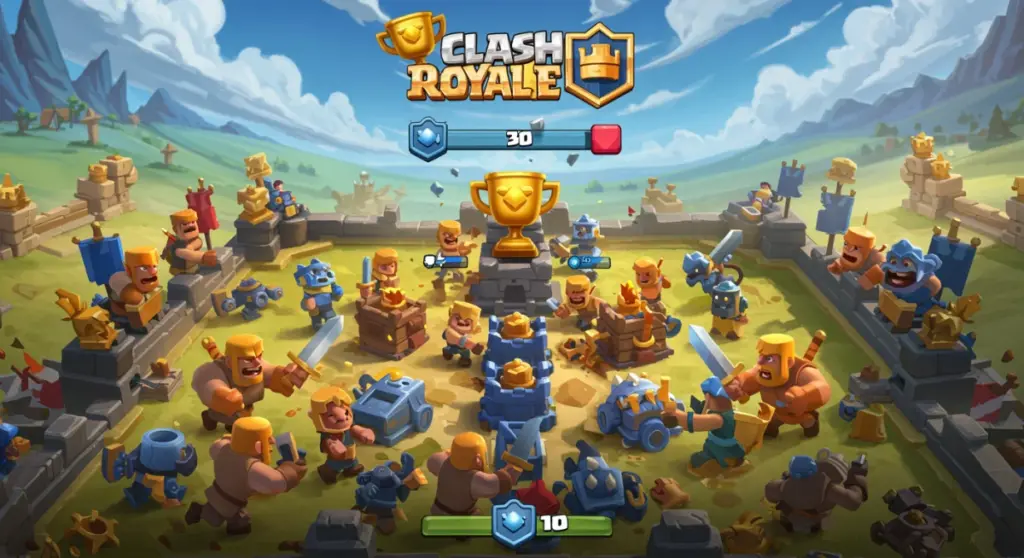
Anúncios
To excel in Clash Royale trophy pushing, players must strategically select and master effective decks, adapt to the ever-evolving meta, and consistently refine their in-game execution for optimal results and higher trophy counts.
Embarking on the journey of Clash Royale trophy pushing can be both exhilarating and challenging. Whether you are a seasoned veteran aiming for ultimate champion or a newer player looking to climb out of lower arenas, understanding the core principles and advanced strategies is crucial. This comprehensive guide is designed to equip you with the knowledge and tactics needed to consistently win battles, overcome plateaus, and ultimately reach your personal best in Clash Royale.
Understanding the Meta and Deck Archetypes
The Clash Royale meta is a constantly shifting landscape, influenced by card balances, new releases, and community innovation. To effectively push trophies, you must not only understand the current meta but also identify which deck archetypes thrive within it. A strong understanding allows you to pick a deck that isn’t just powerful on paper, but also resilient against popular counter-strategies.
Different deck archetypes offer distinct playstyles and require varied approaches. Being familiar with these styles helps you choose a deck that aligns with your personal preferences and strengths, making the learning curve smoother and the trophy climb more enjoyable. This foundation is essential before diving into specific card choices or advanced maneuvers.
Popular Deck Archetypes
Identifying and understanding the prevalent deck archetypes is the first step toward strategic trophy pushing. Each archetype has its unique strengths, weaknesses, and optimal play patterns, requiring different skill sets and strategic thinking.
- Beatdown Decks: These decks focus on building up a massive push, often centered around a high-health tank like Golem or Lava Hound, supported by strong damage-dealers. They aim to overwhelm opponents in double or triple elixir.
- Siege Decks: Utilizing cards like X-Bow or Mortar, siege decks aim to deal damage to the opponent’s towers from their side of the arena. They rely heavily on defensive cycling and skilled placement to protect their win condition.
- Control Decks: Control decks prioritize defending against opponent pushes and then counter-attacking with efficient elixir trades. They often feature cards like Tornado, Poison, or Electro Wizard to manage the battlefield.
- Cycle Decks: Characterized by low average elixir costs, cycle decks aim to quickly rotate through their cards to play their win condition multiple times. Hog Rider or Miner Wall Breakers are common win conditions in these fast-paced decks.
Adapting to Meta Shifts
The meta in Clash Royale is dynamic, with balance changes and new cards constantly altering the landscape. Staying updated is paramount for sustained trophy pushing. Regularly checking community resources, professional player streams, and in-game leaderboards can provide insights into which decks are currently performing well.
When a new balance change hits, it’s crucial to assess how it impacts your chosen deck and the overall meta. Sometimes, a slight tweak to a single card can significantly alter the viability of an entire archetype. Be prepared to experiment with new cards or adjust existing deck compositions to maintain a competitive edge. Flexibility is a key trait of high-ranking players.
In essence, understanding the meta and various deck archetypes provides the strategic framework for your trophy pushing endeavors. It allows you to make informed decisions about your deck choice and approach each battle with a clearer understanding of your opponent’s potential strategies, laying the groundwork for successful execution.
Mastering Deck Building and Card Synergy
Building a coherent and effective deck is perhaps the most critical component of successful Clash Royale trophy pushing. It’s not just about picking powerful cards; it’s about creating synergy where each card complements the others, forming a cohesive strategy. A well-constructed deck can cover multiple defensive and offensive situations, making it resilient against a variety of opponent decks.
Understanding card roles and how they interact is fundamental. Every card in your deck should have a purpose, whether it’s a win condition, a tank, area damage, single-target damage, or a spell. The balance of these roles, combined with a reasonable average elixir cost, dictates the flow and effectiveness of your gameplay.
The Core Components of a Strong Deck
A truly effective Clash Royale deck is more than just a collection of strong cards; it’s a carefully balanced ecosystem designed for specific strategic outcomes. Each component plays a vital role in ensuring the deck can perform both offensively and defensively, adapting to various in-game situations.
- Win Condition: This is the card or combination of cards primarily responsible for dealing damage to opponent towers. Examples include Hog Rider, Golem, Miner, or Balloon. Your entire deck should be built around supporting and enabling this win condition.
- Small Spell: Cards like Zap, Log, Arrows, or Barbarian Barrel are crucial for clearing swarms, resetting charges, or finishing off low-health troops. They provide quick and efficient responses to common threats.
- Big Spell: Poison, Fireball, Lightning, or Rocket offer significant area damage or high single-target damage, useful for clearing pushes, damaging towers, or taking out high-value units. They are often used to support offensive pushes or for defensive value.
- Air Defense: With flying units being prevalent, having reliable air defense is non-negotiable. Cards like Electro Wizard, Mega Minion, or Archers effectively counter aerial threats and protect your towers.
- Ground Defense/Tank Killer: Units such as Mini P.E.K.K.A., Prince, or Inferno Tower are essential for stopping large ground pushes and eliminating high-health tanks. Their role is to provide strong, often single-target, ground defense.
- Cycle/Support Cards: These low-elixir cards help you rotate through your deck quickly and provide additional support. Skeletons, Goblins, or Ice Spirit can distract, cycle, or add small damage.
Achieving Card Synergy
Synergy is the magic ingredient that elevates a good deck to a great one. It refers to how well your cards work together, creating powerful combinations that are greater than the sum of their individual parts. For instance, pairing a tank with a splash damage unit creates a formidable push that is hard to stop.
Consider the classic Golem + Night Witch combination: the Golem tanks for the Night Witch, which spawns bats to deal additional damage and defend against air. Another example is Hog Rider + Earthquake, where Earthquake clears defensive buildings and slows troops, allowing the Hog Rider to connect to the tower more easily. Experimenting with different combinations and understanding how they interact is key to discovering optimal synergy for your playstyle.
Ultimately, a well-built deck with strong card synergy is your primary weapon in the arena. It allows for consistent performance, better defensive capabilities, and more effective offensive pushes, forming the backbone of any successful Clash Royale trophy pushing strategy.
Effective Elixir Management and Cycle Play
Elixir management is arguably the most critical skill in Clash Royale. Every action, from deploying a troop to casting a spell, costs elixir, and how efficiently you utilize this resource directly impacts your success in Clash Royale trophy pushing. Poor elixir management can lead to being overwhelmed, while masterful control can create significant advantages over your opponent.
Cycle play, closely tied to elixir management, involves understanding the order of cards in your deck and strategically playing low-cost cards to get back to your win condition or a crucial defensive card faster. This creates pressure and allows for repeated offensive or defensive cycles that can wear down an opponent.
Optimizing Elixir Trades
An elixir trade occurs when you use less elixir to counter an opponent’s play than they spent. Consistently winning elixir trades accumulates an elixir advantage, which you can then convert into a powerful offensive push. This is a fundamental concept for all levels of play, from casual matches to competitive tournaments.
- Positive Elixir Trade Examples: Using Skeletons (1 elixir) to distract a Mini P.E.K.K.A. (4 elixir) for your tower to eliminate it. Using The Log (2 elixir) to clear a Goblin Barrel (3 elixir) and gain 1 elixir advantage.
- Avoiding Negative Elixir Trades: Don’t overcommit on defense. For instance, using a Fireball (4 elixir) on a single Princess (3 elixir) is a negative trade unless it also hits the tower or other units. Always look for opportunities to get maximum value from your cards.
- Punishing Overcommitment: If your opponent spends too much elixir on one lane, quickly launch a counter-push on the opposite lane. This forces them to react with limited elixir, often leading to a tower advantage for you.
Mastering Your Card Cycle
Understanding your card cycle means knowing which cards are coming next in your hand and planning your plays accordingly. This is particularly important for cycle decks, but beneficial for all archetypes. By playing low-cost cards, you can quickly rotate through your deck to get back to your win condition or a specific counter card.
For example, if you need your Hog Rider but it’s currently at the back of your cycle, you might play an Ice Spirit or Skeletons defensively to cycle faster without losing too much elixir or tower health. Conversely, if your opponent just played their primary counter to your win condition, you can cycle through your deck to play your win condition again before their counter returns to their hand.
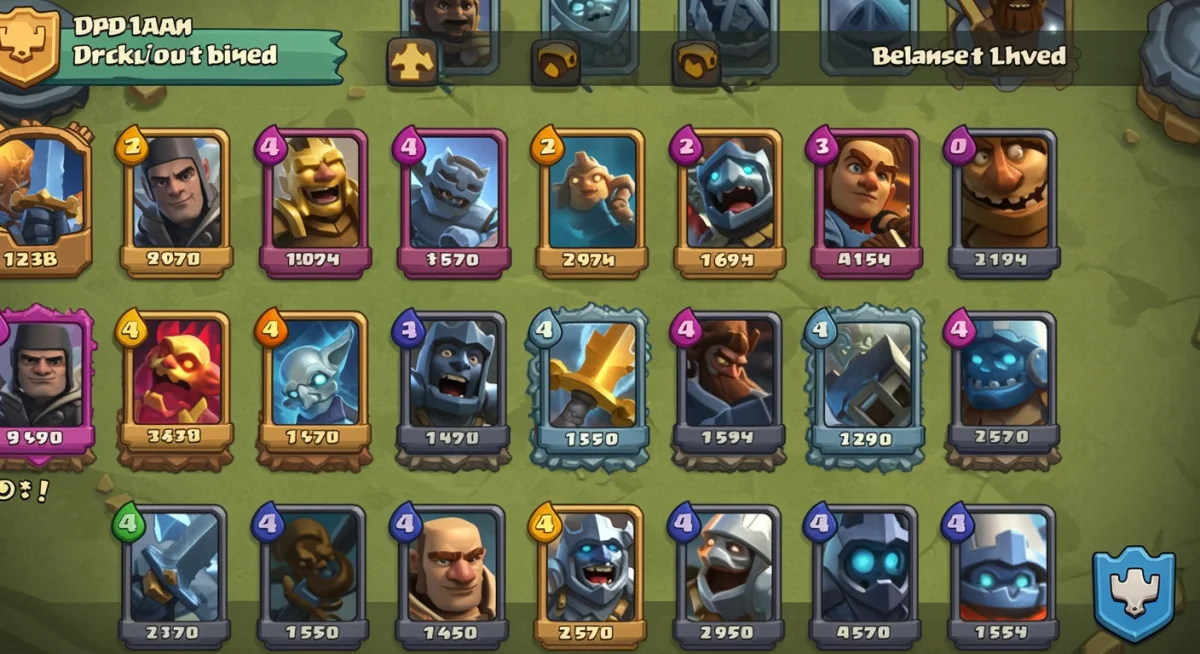
Effective elixir management and intelligent cycle play are the hallmarks of advanced Clash Royale gameplay. They allow players to maintain pressure, defend efficiently, and create decisive openings, making them indispensable skills for anyone serious about Clash Royale trophy pushing.
Strategic Placement and Timing
Beyond deck composition and elixir management, the physical act of playing cards – their placement and timing – is where battles are truly won or lost. Even with the best deck, poor placement can nullify a card’s effectiveness, while precise timing can turn the tide of a match. This aspect of gameplay requires practice, foresight, and a deep understanding of troop pathing and attack ranges.
Strategic placement involves not just where you drop a card, but also when. Anticipating your opponent’s next move and reacting proactively rather than purely reactively can give you a significant edge, disrupting their pushes and maximizing your defensive or offensive potential.
Optimal Troop Placement
The placement of your troops and buildings can determine the success of a defense or offense. Understanding troop pathing, splash radius, and attack ranges is crucial for maximizing value and minimizing damage.
- Kiting: Luring enemy troops away from your tower or into the range of both arena towers using a cheap troop placed strategically. This technique can turn a negative elixir trade into a positive one.
- Split Pushing: Deploying troops in both lanes to force your opponent to divide their elixir and attention. This can be effective with cards like Battle Ram or Miner, forcing difficult defensive choices.
- Placement for Splash Damage: When facing swarms, place splash damage troops (e.g., Wizard, Valkyrie) in a position where they can hit multiple targets simultaneously. Conversely, spread out your own swarm troops to avoid being wiped out by a single splash attack.
- Building Placement: Defensive buildings like Inferno Tower or Tesla should be placed strategically to pull enemy tanks and win conditions away from your towers, allowing your other troops to deal damage safely.
Timing Your Card Drops
Timing is everything in Clash Royale. Dropping a card a fraction of a second too early or too late can lead to wasted elixir or a lost tower. This skill comes with experience and a keen observation of your opponent’s play patterns.
Consider the timing of spells: a well-timed Zap can reset an Inferno Dragon’s charge, saving your tank, while a perfectly placed Fireball can eliminate support troops before they deal significant damage. Similarly, deploying a Mini P.E.K.K.A. just as an enemy Hog Rider crosses the bridge ensures it targets the hog, rather than getting distracted by other troops. Patience is a virtue, especially in single elixir, where every elixir point matters.
Ultimately, strategic placement and impeccable timing are the refined skills that distinguish good players from great ones. They are a continuous learning process, demanding attention to detail and a proactive mindset, critical elements for effective Clash Royale trophy pushing.
Understanding Matchups and Counterplay
One of the advanced aspects of Clash Royale trophy pushing is the ability to understand and adapt to different matchups. Every deck has favorable and unfavorable matchups against others. Recognizing these early in a game allows you to adjust your strategy, focusing on your win conditions while mitigating the opponent’s.
Counterplay isn’t just about having the right cards; it’s about knowing how to use them effectively against specific threats. This requires a deep knowledge of card interactions, troop behaviors, and common strategies associated with various deck archetypes.
Identifying Opponent’s Deck
The first 30-60 seconds of a match are crucial for identifying your opponent’s deck archetype and potential win conditions. Pay close attention to their opening plays and the cards they reveal. This information allows you to anticipate their strategy and plan your counterplay accordingly.
- Early Game Card Reveals: If your opponent starts with a Golem in the back, you know you’re likely facing a beatdown deck. If they drop an X-Bow, prepare for a siege matchup.
- Common Combinations: Many decks rely on specific combos (e.g., Hog Rider + Zap, Lava Hound + Balloon). Once you see one part of the combo, anticipate the other and prepare your defense.
- Elixir Commitments: Observe how and where your opponent commits elixir. This can reveal their defensive weaknesses or their primary offensive lane.
Adapting Your Strategy Mid-Game
Once you’ve identified your opponent’s deck, you need to adapt your strategy. If you’re in a bad matchup, playing defensively and looking for small elixir advantages might be your best bet. If you have a favorable matchup, you might play more aggressively, trying to exploit their weaknesses.
For example, against a heavy beatdown deck, you’ll want to save your tank killers and big spells for their main push. Against a fast cycle deck, you might need to conserve elixir for consistent defense and punish their relentless pressure with a well-timed counter-push. Predicting their next move and having the right counter in hand is a major component of high-level play.
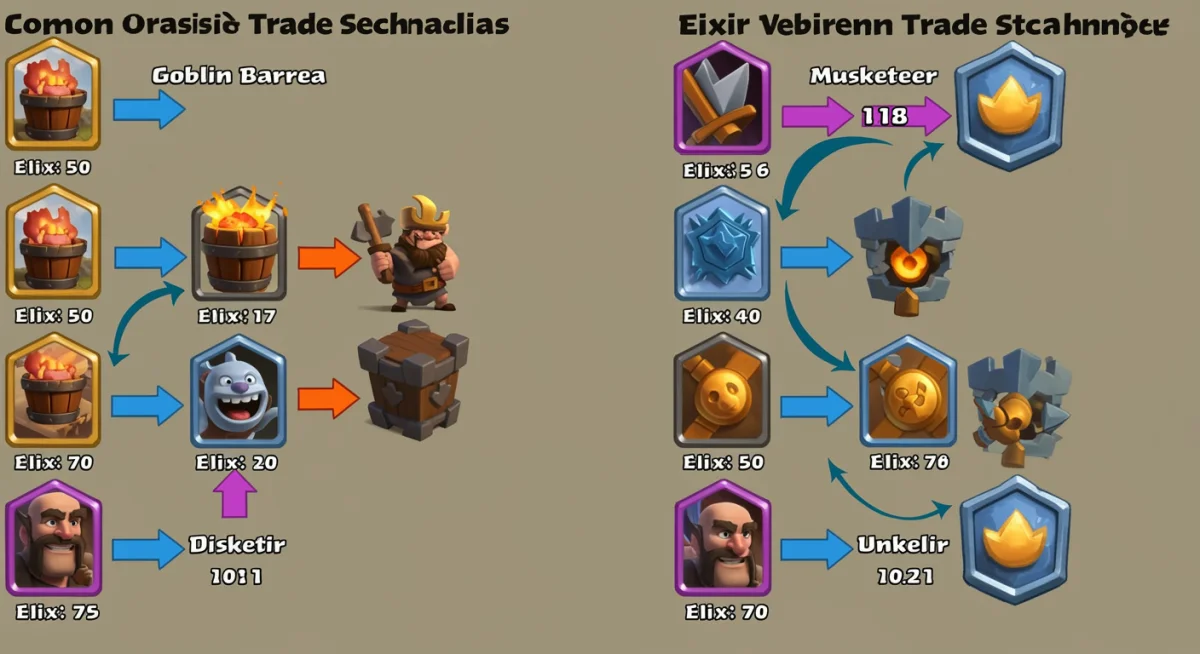
Understanding matchups and mastering counterplay are essential for climbing the trophy ladder. It transforms reactive gameplay into proactive strategy, allowing you to dictate the pace and outcome of battles, which is vital for serious Clash Royale trophy pushing.
Practice, Analysis, and Mental Fortitude
While theoretical knowledge of decks, elixir management, and card interactions is vital, consistent Clash Royale trophy pushing ultimately boils down to practice, self-analysis, and maintaining a strong mental game. The arena is not just a test of strategy but also of resilience and continuous improvement.
Every loss is an opportunity to learn, and every win reinforces good habits. High-level players don’t just play; they reflect on their games, identify mistakes, and actively seek ways to improve their execution and decision-making under pressure.
The Power of Replays and Self-Analysis
Watching your replays is one of the most effective ways to improve. It allows you to objectively review your decisions, identify missed opportunities, and spot recurring mistakes that might be costing you trophies. Critical self-analysis is a cornerstone of improvement in any competitive endeavor.
- Identify Elixir Leaks: Did you sit at 10 elixir for too long? Did you make a negative elixir trade that could have been avoided?
- Review Card Placements: Could a troop have been placed in a better spot to maximize its value or protect it from splash damage?
- Assess Win Condition Usage: Did you deploy your win condition at the right time? Was it adequately supported?
- Analyze Opponent’s Strategy: What did your opponent do well? How did they counter your pushes? This can give you ideas for future games.
Maintaining Mental Fortitude
Trophy pushing can be frustrating, especially during losing streaks. Maintaining a positive mindset and avoiding tilt is crucial. Tilt often leads to impulsive plays, poor decisions, and even more losses, creating a vicious cycle.
If you find yourself getting frustrated, take a break. Step away from the game for a few minutes or even an hour. Come back with a fresh perspective. Remember that every player experiences losing streaks, and it’s how you respond to them that defines your progress. Focus on improving your gameplay rather than just the trophy count, and the trophies will naturally follow.
Ultimately, consistent practice, diligent self-analysis, and unwavering mental fortitude are the personal attributes that will propel you to new heights in Clash Royale trophy pushing. These elements combine to create a resilient and adaptable player capable of overcoming challenges and achieving their personal best.
Advanced Tactics and Nuances
Once you’ve mastered the fundamentals of deck building, elixir management, and basic interactions, delving into advanced tactics and nuances can further refine your gameplay and give you an edge in high-trophy matches. These are the subtle plays that often surprise opponents and secure victories that might otherwise seem out of reach in intense Clash Royale trophy pushing scenarios.
These tactics often involve exploiting opponent habits, understanding specific card interactions at a deeper level, and executing plays with extreme precision. They require not just knowledge but also keen observation and quick decision-making under pressure.
Leveraging Spell Value
Spells are not just for direct damage or clearing troops; they can be used for a multitude of strategic purposes that provide immense value. Maximizing spell value is a hallmark of an expert player.
- Prediction Spells: Dropping a spell like Fireball or Poison on a spot where you anticipate your opponent will play a troop (e.g., Minion Horde on a tank, Goblin Barrel on the tower). A successful prediction can lead to massive elixir advantages.
- King Tower Activation: Using a spell like Earthquake, Rocket, or Fireball to intentionally activate the opponent’s King Tower early in the game. While this gives them an extra defensive tower, it can be a strategic move with certain decks that benefit from having all three towers active for their win condition (e.g., Miner cycle decks that utilize damage from all towers).
- Bridge Spam: Using spells to clear out defenses or support fast-moving troops at the bridge, aiming for quick tower damage before the opponent can react.
Exploiting Troop Pathing and AI
Clash Royale troops have predictable AI and pathing. Understanding these mechanics allows for advanced defensive and offensive maneuvers that can outsmart opponents.
For example, a strategically placed building or troop can pull an enemy unit across the entire arena, effectively wasting their elixir and allowing your towers to deal significant damage. This is particularly effective against single-target, high-damage units like Mini P.E.K.K.A. or Princes. Similarly, knowing how to split troops like Royal Recruits or Barbarians can create dual-lane pressure that is difficult for opponents to manage, often leading to overcommitment in one lane and an opening in the other.
Mastering these advanced tactics and nuances elevates your gameplay from good to exceptional. They represent the fine-tuning of your skills, allowing you to consistently outmaneuver and outthink opponents, which is essential for reaching the highest echelons in Clash Royale trophy pushing.
Community Resources and Continuous Learning
The journey of Clash Royale trophy pushing is an ongoing process of learning and adaptation. The game’s vibrant community offers a wealth of resources that can significantly accelerate your improvement. Engaging with these resources and adopting a mindset of continuous learning will keep you ahead of the curve and help you navigate balance changes and meta shifts.
From watching top players to participating in community discussions, there are numerous avenues to gain new insights, refine your strategies, and discover innovative deck ideas that can propel your trophy count to new heights.
Utilizing Online Resources
The internet is brimming with Clash Royale content, much of which is invaluable for players looking to improve. Knowing where to look for reliable and up-to-date information is key.
- YouTube Channels: Many professional players and content creators regularly post gameplay analysis, deck guides, and meta breakdowns. Channels like OJ (Orange Juice Gaming), CWA Mobile Gaming, and SirTagCR offer deep insights into card interactions and strategic plays.
- Clash Royale Stats Sites: Websites like RoyaleAPI and DeckShop.Pro provide comprehensive data on card win rates, popular decks, and meta trends. These resources are excellent for identifying strong decks and understanding their performance.
- Community Forums and Subreddits: Platforms like Reddit’s r/ClashRoyale are great places to discuss strategies, ask questions, and get feedback from other players. You can often find discussions about new meta trends or effective counter-strategies.
Joining Clans and Practicing with Peers
A good clan is more than just a social hub; it’s a training ground. Playing friendly battles against clanmates is an excellent way to test new decks, practice specific strategies, and get constructive feedback in a low-stakes environment. Clan wars also provide valuable competitive experience.
Discussing strategies with experienced clanmates can reveal new perspectives and help you understand complex matchups. Many clans have members with diverse playstyles and preferred archetypes, offering a wide range of opponents to practice against. This collaborative learning environment can be incredibly beneficial for speeding up your progress and adapting to new challenges.
By actively engaging with the Clash Royale community and committing to continuous learning, you ensure that your Clash Royale trophy pushing efforts are always informed by the latest meta insights and refined strategies. This proactive approach is what separates consistent climbers from those who stagnate.
| Key Strategy | Brief Description |
|---|---|
| Meta Adaptation | Continuously adjust decks and strategies based on current game balance and popular archetypes. |
| Elixir Management | Master efficient elixir trades and card cycling to maintain an advantage over opponents. |
| Strategic Placement | Optimize troop and building placement for maximum defensive and offensive impact. |
| Self-Analysis & Practice | Regularly review replays and practice to identify and correct mistakes, improving execution. |
Frequently Asked Questions About Trophy Pushing
While many factors contribute, consistent elixir management and a deep understanding of your chosen deck’s synergy are paramount. Efficiently converting elixir advantages into offensive pressure or solid defense is key to winning more matches and climbing the trophy ladder.
It’s generally recommended to stick with a well-practiced deck to master its nuances. However, be prepared to make minor adjustments or switch decks entirely if the meta shifts significantly due to balance changes, or if you consistently face unfavorable matchups.
‘Tilt’ refers to a state of frustration or anger after losses, leading to poor decision-making. To avoid it, take short breaks after a few consecutive losses, analyze replays calmly, and focus on learning rather than just the trophy count. A fresh mind plays better.
Not necessarily. While cycle decks are popular for their speed and ability to apply constant pressure, beatdown and control decks can be equally effective if mastered. The ‘best’ deck depends on the current meta, your playstyle, and your ability to execute the deck’s strategy.
Clan participation is highly important. Friendly battles allow you to test strategies without risk, clan wars provide competitive experience, and discussing tactics with clanmates offers valuable insights and feedback, all contributing to faster improvement and more effective trophy pushing.
Conclusion
Achieving your personal best in Clash Royale trophy pushing is a multifaceted endeavor that combines strategic foresight, meticulous execution, and continuous learning. By understanding the meta, building synergistic decks, mastering elixir management and card placement, and cultivating a resilient mindset, you can consistently climb the ranks. Remember that every battle, whether a win or a loss, offers a chance to refine your skills and deepen your understanding of the game. Embrace the journey, analyze your plays, and leverage the vast community resources available, and you will undoubtedly reach new heights in the arenas of Clash Royale.
